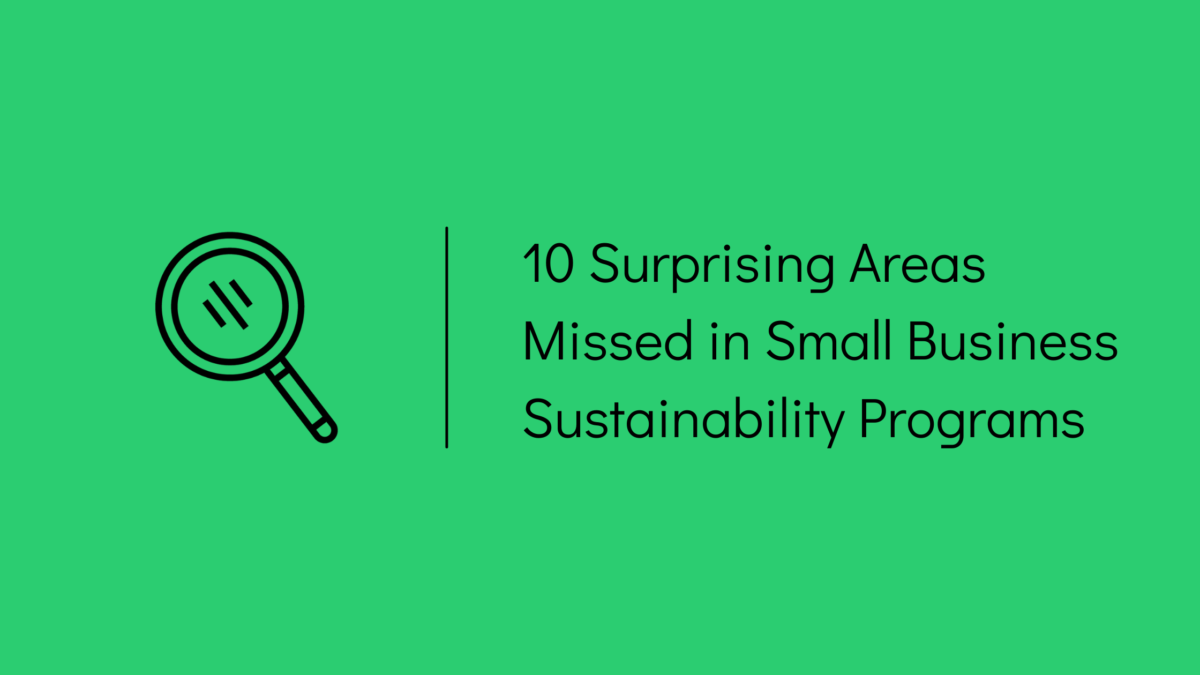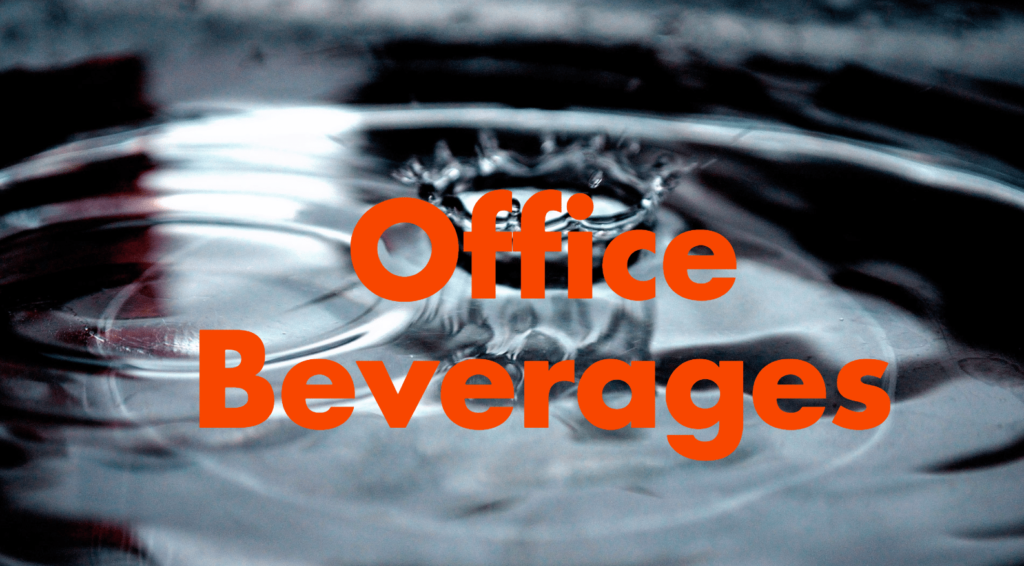
It’s not always easy to define when a company is being “green” or “sustainable,” is it?
I often talk to businesses that are doing really well in one area, usually energy efficiency. They have solar panels and LED lights, which is great, but…
there’s a lot more to sustainable business practices than just that. Once you’ve upgraded your lights and set up your recycling program, consider expanding into these other areas.

Employee Commutes & Travel. For many offices, this is one of the biggest sources of carbon emissions. In fact, in California, driving is the “largest source of carbon dioxide gas, the primary contributor to climate change.” Fortunately, there are many alternatives to minimize driving. Setting up programs to incentive employees to bike, carpool, or take public transit is a good way to start. Telecommuting may be an option. Video conferences and webinars can eliminate the need for in-person meetings in some cases. When face-to-face meetings are necessary, you can choose meeting locations that are accessible by public transportation. Driving can then become a last resort.

Office Beverages. For starters, get rid of the bottled water! There are many reasons why bottled water is bad for the environment, including the use of petroleum just to make the plastic. Nobody will take offense if you offer a glass of water instead. And while you’re at it, get rid of the K cups for coffee, which require manufacturing and shipping billions of pieces of plastic that are unlikely to get recycled.

401k Plans. Does the 401k plan that you offer to employees reflect your company’s values? Specifically, have you divested from fossil fuels? If your business is making sustainability a priority, it doesn’t make sense to invest in companies that are undermining your efforts by lengthening our dependence on fossil fuels.

Banking: Does your company bank with a corporate bank on Wall Street or with a local, community-focused bank? A local bank will tend to have higher social standards since they are members of the local community. Keeping your money local will also help the local economy (and you’ll get points on the B Impact Assessment for this).

Employee engagement. While many companies are actively working on employee engagement, many small businesses still have sustainability programs that are largely driven by the CEO/owner or organized by an admin. In both cases, while it’s commendable to have at least those resources allocated to sustainability, the company is missing a huge opportunity. There are many ways to address this, such as by forming a green team, implementing employee engagement strategies, or engaging employees to create a sustainable business.

Giving Back. As companies look to implement the triple bottom line, they need to pay increasing attention to not just their environmental impact but also their social impact. One of the best ways to have a positive social impact – and to engage employees – is to implement a community service policy that allows your company to give back to the local community.

Supply Chain. Take a hard look at your supply chain. Are you purchasing products and services from companies that are socially and environmentally responsible? Are you purchasing from companies that are local? Remember that every dollar you spend is a vote in favor of a company’s practices, so be sure to choose wisely!

Business Model. Is your business designed to benefit people and the planet? Does your business make money in a way that is sustainable, or is it dependent upon an inherently unsustainable model, such as producing cheap plastic products in China? We’re rapidly moving towards a future where sustainable businesses will continue to replace those that are inherently unsustainable.
![]()
Tracking and Metrics. Every sustainability program should include tracking and metrics. To get started, get the baselines for your energy and water usage, along with your waste levels. Most of this information will be available on your bills, or you can contact your utility, water district or waste hauler. Once you have the baselines set, you’ll be able to establish reduction targets and evaluate different initiatives based on which ones will yield the best results.

Certifications: Many businesses overlook the opportunities to learn, establish, and grow their sustainability programs by going through a certification process. Both the Green Business Program and B Corps offer great frameworks that any company can use to learn more about best practices across a wide range of areas, from energy efficiency to community involvement.
Next Steps
Go through the list above with your green team or others in your office that have an interest in sustainability to identify opportunities for improvement.